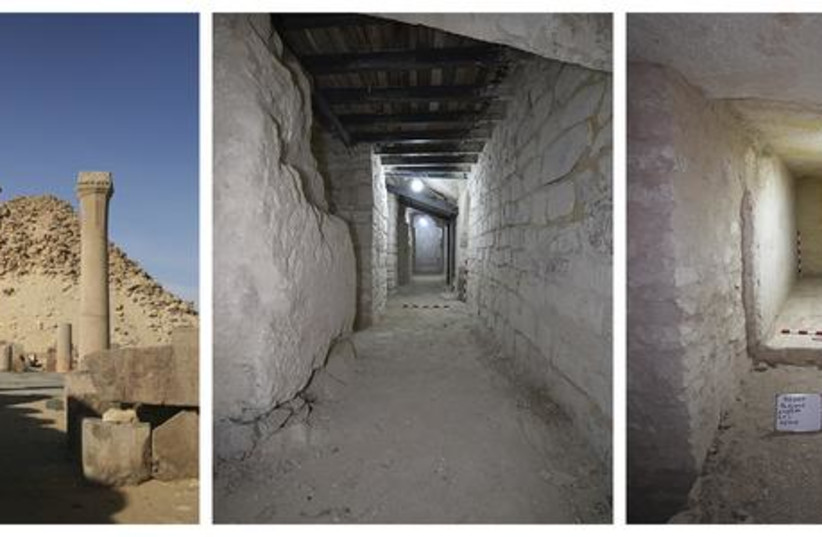Egypt’s pyramids continue stunning experts, as new hidden rooms discovered
New rooms were discovered in the Sahura’s Pyramid.
Despite years of research into Egypt’s archaeological treasures, researchers have continued to uncover new secrets and mysteries from the ancient sites, according to a statement made from the Julius-Maximilians-Universität of Würzburg on September 27.
New rooms were discovered in the Sahura’s Pyramid by researchers from Egypt and Germany. The efforts, which were led by Egyptian-German Egyptologist Dr. Mohamed Ismail Khaled, helps to shed light on the architecture of the pyramid of the second king of the Fifth Dynasty (2400 BC) and the first king to be buried at Abusir.
The excavations began in 2019, when researchers started work on stabilizing the substructure so that investigations could safely begin. The team were able to secure the burial chambers of King Abusir for the first time.
What is behind the mystery tunnel?
The team had discovered the original dimensions of the chamber and a plan to the antechamber, which had deteriorated significantly. It was from this discovery that the researchers were able to uncover the new walls disguising the broken old ones. The eastern wall of the antechamber was badly damaged, and only the northeast corner and about 30 centimeters of the eastern wall were still visible.
A low passageway that had originally been discovered in 1836 by John Perring had been excavated. When the team came upon the decaying tunnel, it was entirely filled with debris and the team was unable to pass through. The team were able to prove Perring’s theory that the passage led to the storage rooms.
8 chambers discovered inside Sahure’s Pyramid in Abusir Necropolis
Eight storerooms have been uncovered so far.
Using state-of-the-art technology, including 3D laser scanning with a ZEB Horizon portable LiDAR scanner from GeoSLAM, the researchers collaborated with the 3D Geoscan team to conduct detailed surveys inside the pyramid. Using this technology allowed for the team to build a comprehensive mapping of both the extensive external areas and the narrow corridors and chambers inside.


No comments:
Post a Comment
Stick to the subject, NO religion, or Party politics